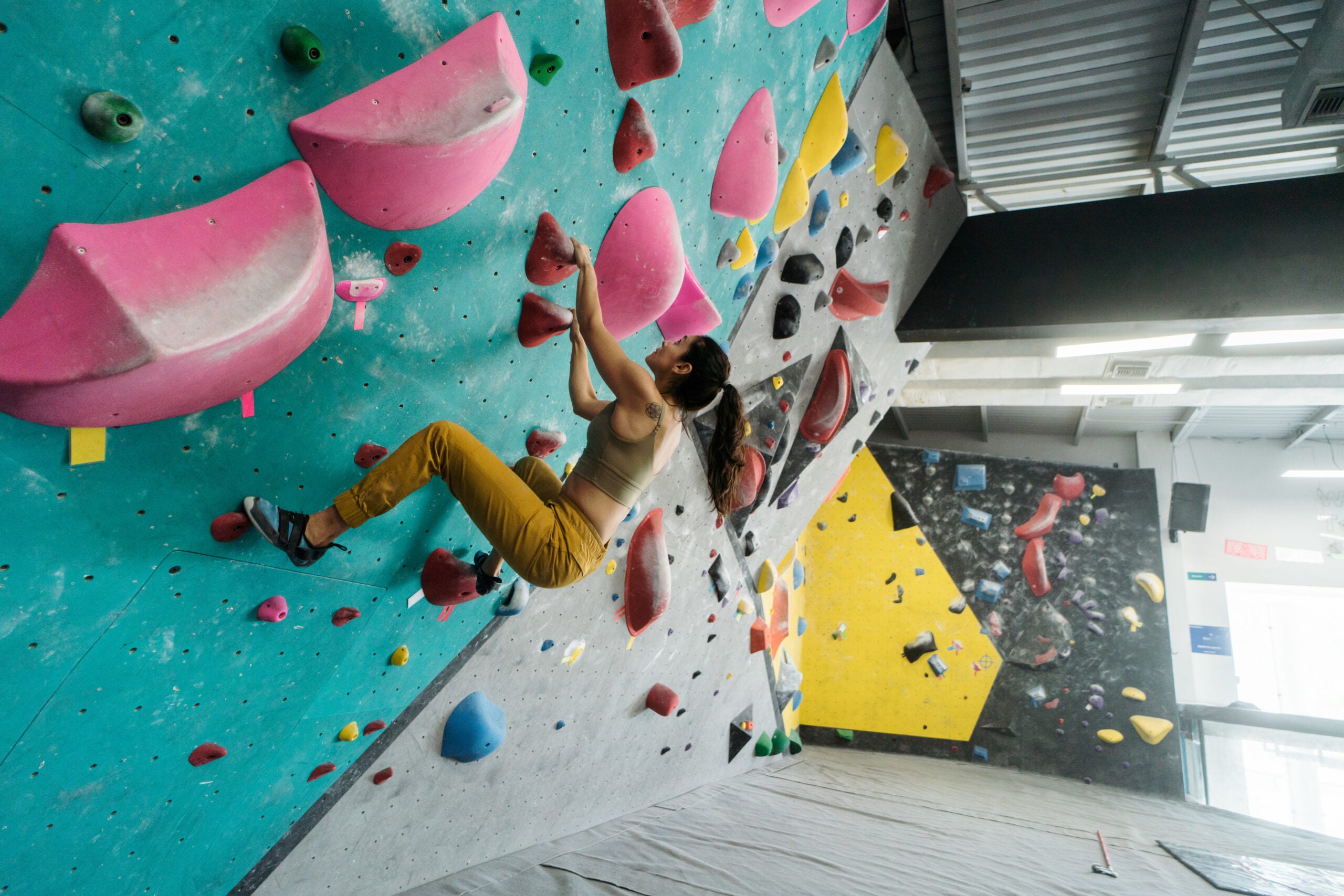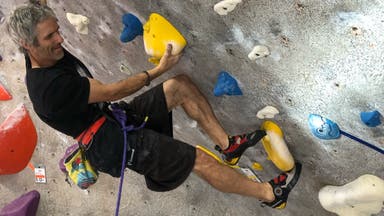The 7 Most Common Beginner Climber Mistakes

A beginner, doing beginner things. (Photo: aldomurillo / Getty Images)
The most common thing holding beginner climbers back is themselves. After climbing for over 25 years, here are seven mistakes I’ve seen rookies commonly make.
1. You are trying something too hard.
Too often, a V5 climber spends the majority of their time on a V8, or a V2 climber on a V5. Bad idea.
If you must try something three grades harder than you’ve done, just do it for a bit. And do it for the right reasons. Don’t obsess. About three to four tries per session. If you have a project, keep it to one to two grades above your max. That builds confidence. Getting shut down all the time sucks. And the longer you spend on moves you don’t belong on, the greater chance you have of getting injured. Also, more wins is better—you are going through the motions of what it feels like to put something together. The latter is invaluable.
2. You are not warming up properly.
You do a few problems (or routes) below your ability. Then you get a drink, have a chat, and think you’re good to go. You are not.
Our Picks
I don’t care how old you are, warming up takes 30 to 45 minutes. If you leave the office at 5:30 to go to the gym, do 50 jumping jacks and some push ups, or even run in place, before you get in the car. Getting the blood pumping and heart rate up is key to any warm up. By the time you arrive at the gym, you will notice you are looser and ready to go quicker.
Related: Getting Strong is Half the Battle. But Don’t Forget the Other Half.
3. You are falling on the bouldering wall and letting your legs absorb the fall.
Keep doing this and a knee, ankle or hip injury is not far off.
Learn the art of rolling backward when you fall. This is assuming, of course, that your gym has good pads. Land in a squat with your momentum moving backward, from your butt to your back. Roll like an egg, but not so much so as to get whiplash. Gymnasts have been perfecting the art of the backward roll for decades. Falling in the bouldering cave is the most common form of injury for gyms. Practice falling and don’t add to that statistic.
4. You are too scared to fall while lead climbing.
If you are scared to fall, you’ve got a problem on your hands. Of course, a wee bit of trepidation is okay. But if you generally don’t like to fall, you need to practice ASAP. This fear alone will keep you from reaching your potential as a climber.
Practice taking small falls on toprope, then small falls on the (overhanging) lead wall. Then bigger falls on the lead wall. On your warm up, climb to the top, then downclimb and take a whip on the last bolt. I have seen so many people not send because of their fear of falling. But becoming comfortable with the whip is in your control. It should be the first thing you master.
Related: How to Conquer Your Fear of Falling—Even in the Gym
5. You are trying to climb with good posture.
Are you keeping your back straight and slightly arched, like you would when doing squats? This is not the weight room everyone—this is climbing. There’s no such thing as good posture in climbing. There is only what works—the cruel fact of natural selection in terms of movement.
If you must, the best “posture” is to stay loose, moving, and flowing between holds. Keep your form adaptable, never stiff … unless, of course, you need to be stiff. Climbers talk about being “in position” for a move. Moves and positions are always changing. It is never a one-size-fits-all scenario. Good “posture” is only applicable on a per-move basis.
6. You aren’t resting enough between burns, AKA, the rapid fire.
For the entirety of my twenties, I was guilty of this. I’d fall then get frustrated and hop right back on, typically with the same result: failure. Force yourself to take rest, even if you don’t think you need to. Muscle needs to recover after exertion, period. End of story.

7. You are wearing horrible shoes.
Just. Stop. Doing. This. Get yourself a good pair of shoes. Don’t buy the cheapest. Buy the shoes that suit your needs and have the best fit. You just spent $30 on a kale salad and a beer last Thursday night, and you won’t spend an extra 30 bucks for climbing shoes that you will use three times a week for months? No sense do you make.
Watch Avianny Frady talk about some of the climbing mistakes she made as a beginner
Francis Sanzaro is the author of The Zen of Climbing and The Craft of Bouldering. Learn more about him here.



